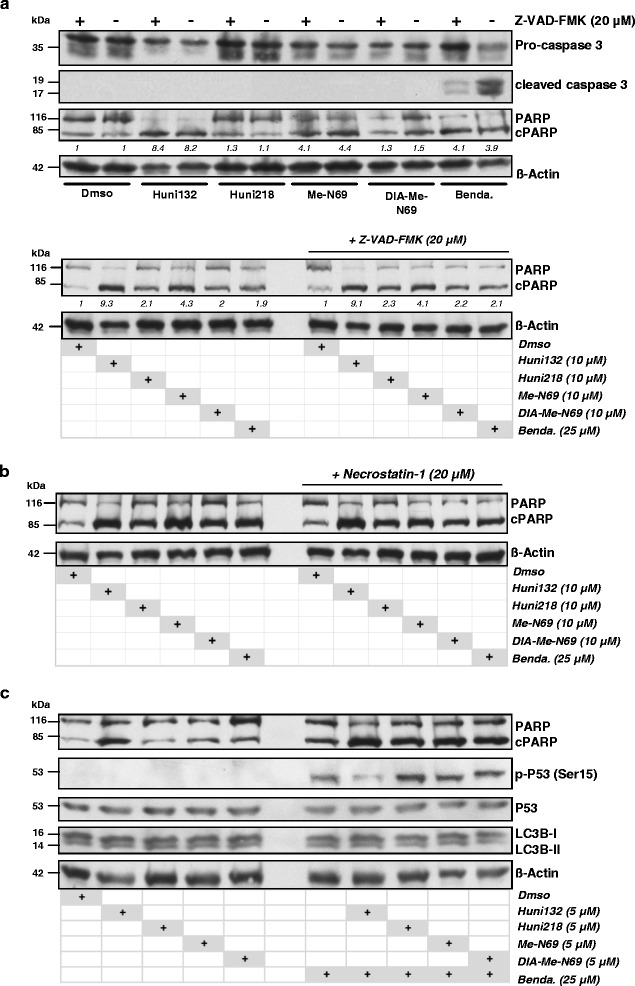Fig. 3.

The cell death induced by organometallic nucleosides in CLL is non-necroptotic and non-autophagic as well as independent of caspase-3 and p53. Representative immunoblots (12 % SDS gels, 20 μg protein load) of independent experiments on 8 CLL patient samples. Suspension cultures were untreated or treated with 10 μM of each of the 4 metal-containing nucleoside analogues (MCNA) for 24 h following a 1 h pre-incubation with the “analytic” inhibitor. (a) The MCNA trigger cleavage of PARP at various degrees without induction of cleaved effector caspase-3 (top panel) and irrespective of the presence of the pan-caspase inhibitor Z-VAD (20 μM; top and bottom panel). In contrast, bendamustine (25 μM) mediates caspase-3 activation, which is Z-VAD responsive (top panel). (b) The inhibitor of necroptosis Necrostatin-1 does not noticeably affect the MCNA induced PARP cleavage in CLL cells (staurosporine control experiments in online Supplements). (c) PARP cleavage in CLL cells promoted by the MCNA is neither associated with pSer15-P53 activation nor with changes in levels of the autophagocytic marker protein LC3B-II (rapamycin control experiments in online Supplements). The combination of the MCNA with the alkylator bendamustine enhances PARP cleavage alongside a specific p53-phospho-activation, but without noticeable changes in levels of converted LC3B-II
